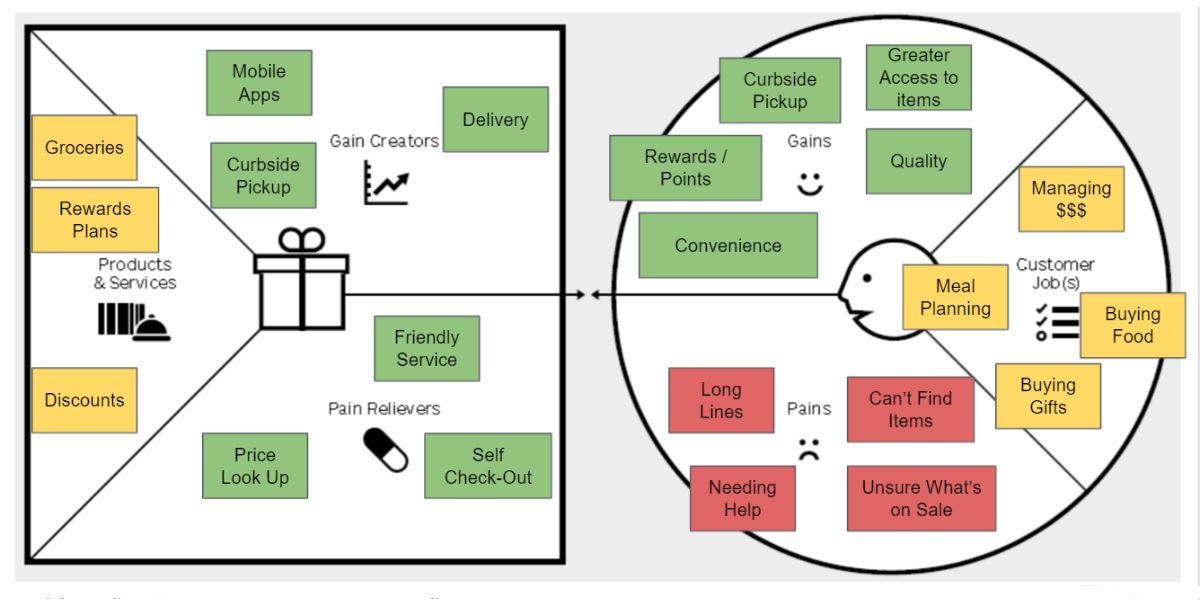Tips for Creating a Value Proposition and Strategy
Creating a compelling value proposition and strategy is crucial for any business aiming to succeed in a competitive market. Based on a blend of experience, practical insights, and academic research, this article will hopefully provide you with some valuable tips to help you effectively craft your value proposition and align it with your strategic goals.
Note:
This article features content from the Marketing Made Clear podcast. You can listen along to this episode on Spotify:
Understanding Your Customer
The foundation of a robust value proposition lies in a deep understanding of your customer. This starts with creating detailed customer profiles that represent your key market segments. By identifying the unique characteristics, behaviors, and needs of your target customers, you can tailor your value proposition to resonate more effectively with them.
Customer Profiles and Value Mapping
To test your value proposition, it’s essential to map your unique selling points (USPs) to your customer profiles. This process, known as value mapping, involves linking your offerings directly to the specific needs and preferences of your target customers. By doing so, you articulate how you intend to create value for each customer segment.
The Strategyzer series of books offers a useful framework for this process. They describe customer needs as “jobs“—tasks your customers are trying to accomplish or problems they aim to solve. Additionally, they identify “pain points,” which are obstacles or frustrations encountered by customers, and “gains,” which are the benefits or positive outcomes customers seek.
By researching or leveraging your knowledge to identify these jobs, pains, and gains for each customer profile, you can prioritize and rank them according to their importance. This allows you to align your value proposition with the most critical aspects of your customers’ needs.

Applying Value Proposition in Communications and Advertising
A clear value proposition is instrumental in guiding your communications and advertising strategies. When creating advertisements for specific customer segments, you need to focus on the most important messages that resonate with each group. This ensures that your marketing efforts are targeted and effective.
Case Study: IKEA
Consider IKEA‘s approach to different customer groups. For students, IKEA emphasises affordable furniture like tables and chairs, understanding that budget constraints and ease of transportation are critical factors for this segment. IKEA might also promote low home delivery costs or lightweight products, recognising that many students lack access to cars.
On the other hand, for high-end customers, IKEA focuses on design services and kitchen planning and installation services, placing less emphasis on product affordability. This segment values service quality and design aesthetics over price.
IKEA’s customer profiles might include detailed demographic information, media consumption habits, and lifestyle preferences. For instance, “Sammy the Student” could be a profile that includes social media usage patterns, online activity times, and preferences for in-store dining deals. Meanwhile, “Sally from the Valley” might represent a high-end customer profile with information on preferred media channels and a propensity for service-oriented offers.
Personalised Marketing Strategies
Developing distinct strategies for each customer segment ensures that your marketing efforts are relevant and effective. Without a clear strategy tailored to each group, it’s challenging to create targeted campaigns that resonate with your audience.
Leveraging Training and Resources
Continuous learning and leveraging available resources can significantly enhance your marketing strategy. Google offers excellent free training for marketers, emphasising the importance of understanding the market and your potential customers. According to Google, the sweet spot for a value proposition lies in customer-first marketing, where brands communicate in a way that engages customers while advancing the company’s interests.
Google’s training platform highlights the need for brands to align their mission and identity with what customers truly want, thereby adding value to their lives. Given Google’s extensive influence in the digital space, their recommendations are particularly valuable for digital marketing strategies.
Here are some videos from reputable organisations that might be of interest:
Crash Course: Value Proposition and Customer Segments
Shopify: Value Propositions: What They Are & How To Create Them
Harvard Innovation Labs: Value Props: Create a Product People Will Actually Buy
Conclusion
The key takeaway from these insights and recommendations is to focus on the customer. By understanding your customers deeply, mapping your value proposition to their needs, and developing targeted strategies for each segment, you can create a compelling value proposition that drives your business forward.
Continuous learning and leveraging available resources, such as Google’s training, can further refine your approach and ensure your strategies remain effective and relevant.
By practically applying these tips, you’ll be well-equipped to craft a value proposition and strategy that not only engages your customers but also propels your business towards success.
Up Next:
Marketing Strategy Trends


